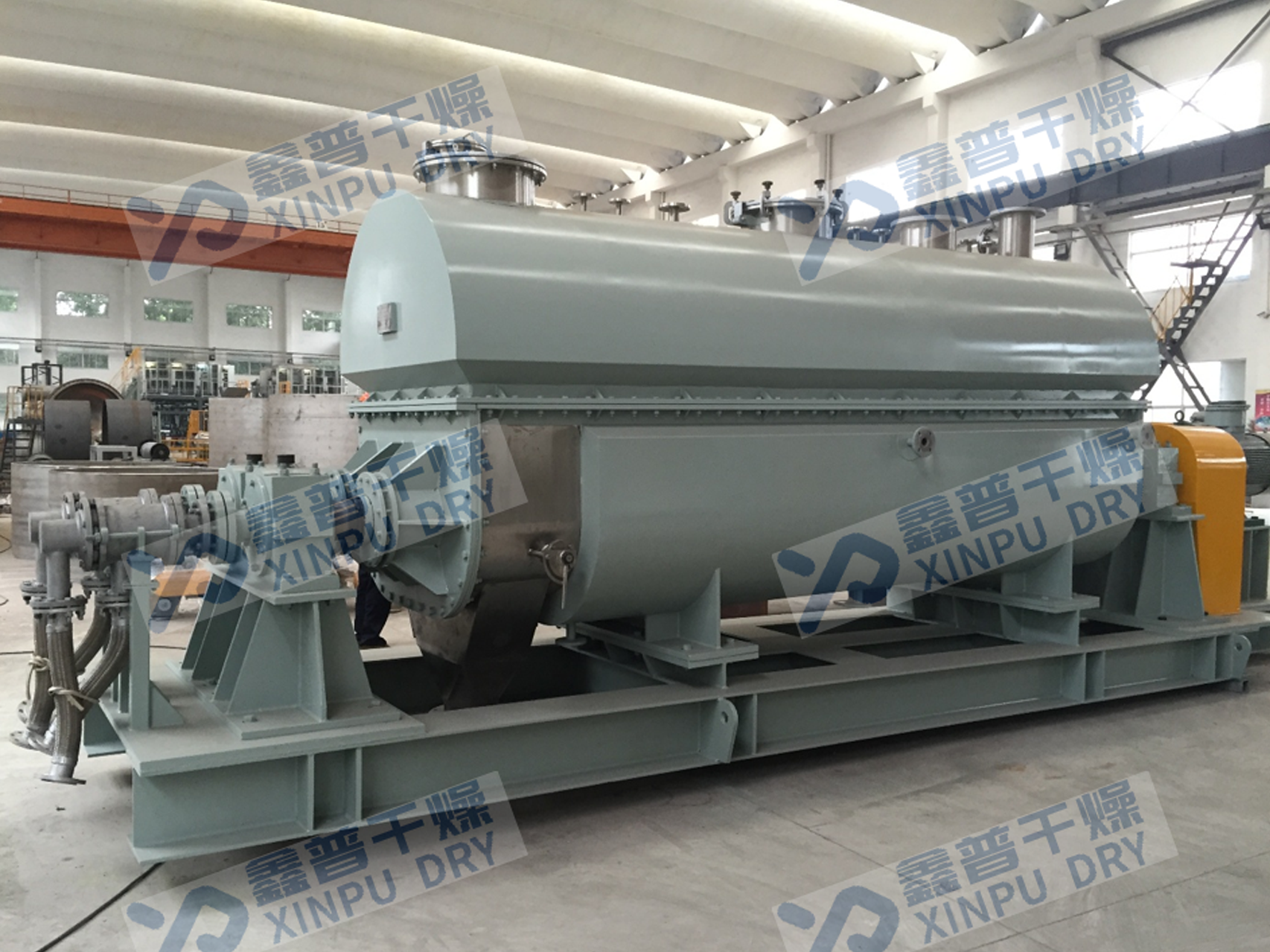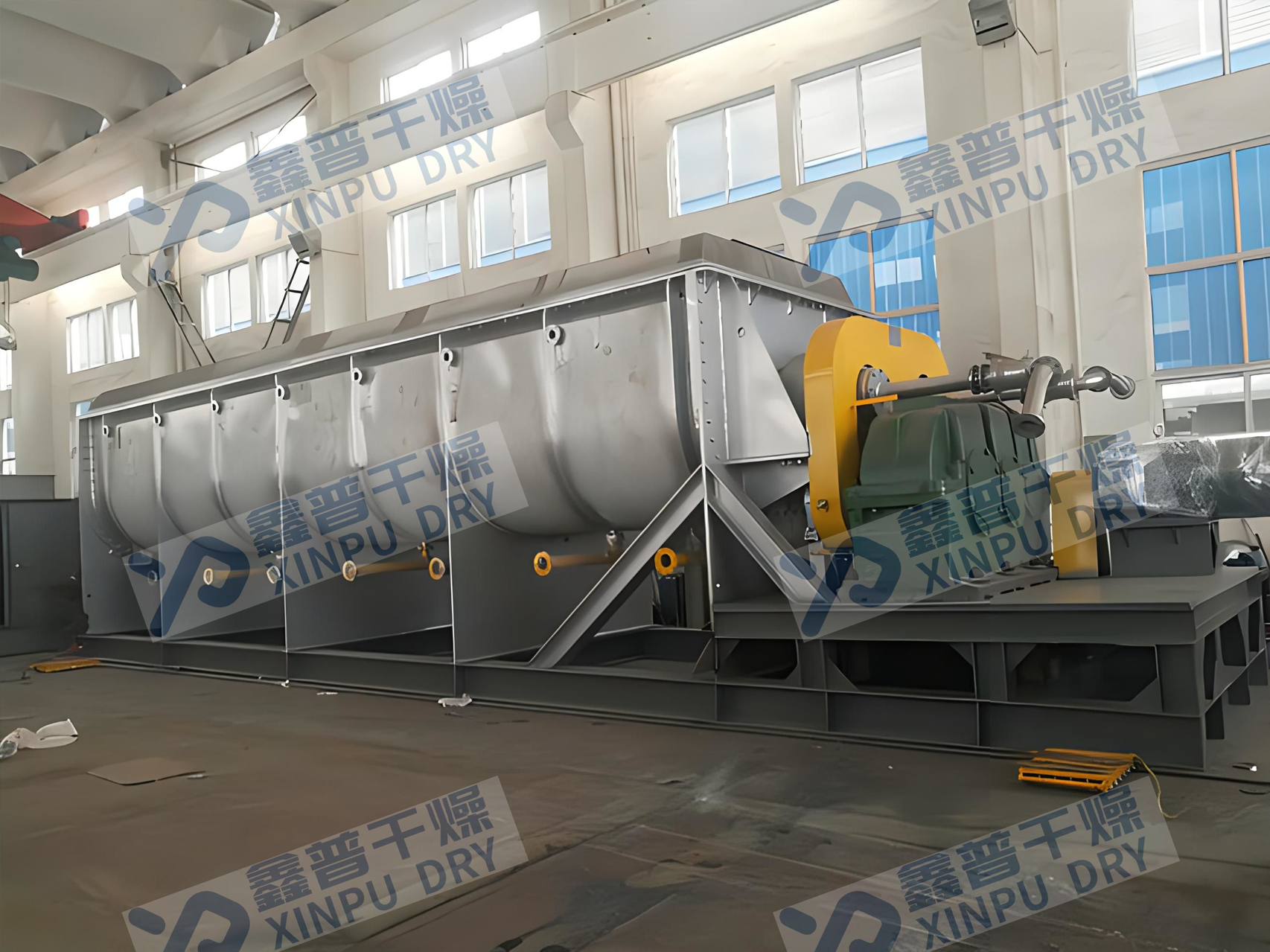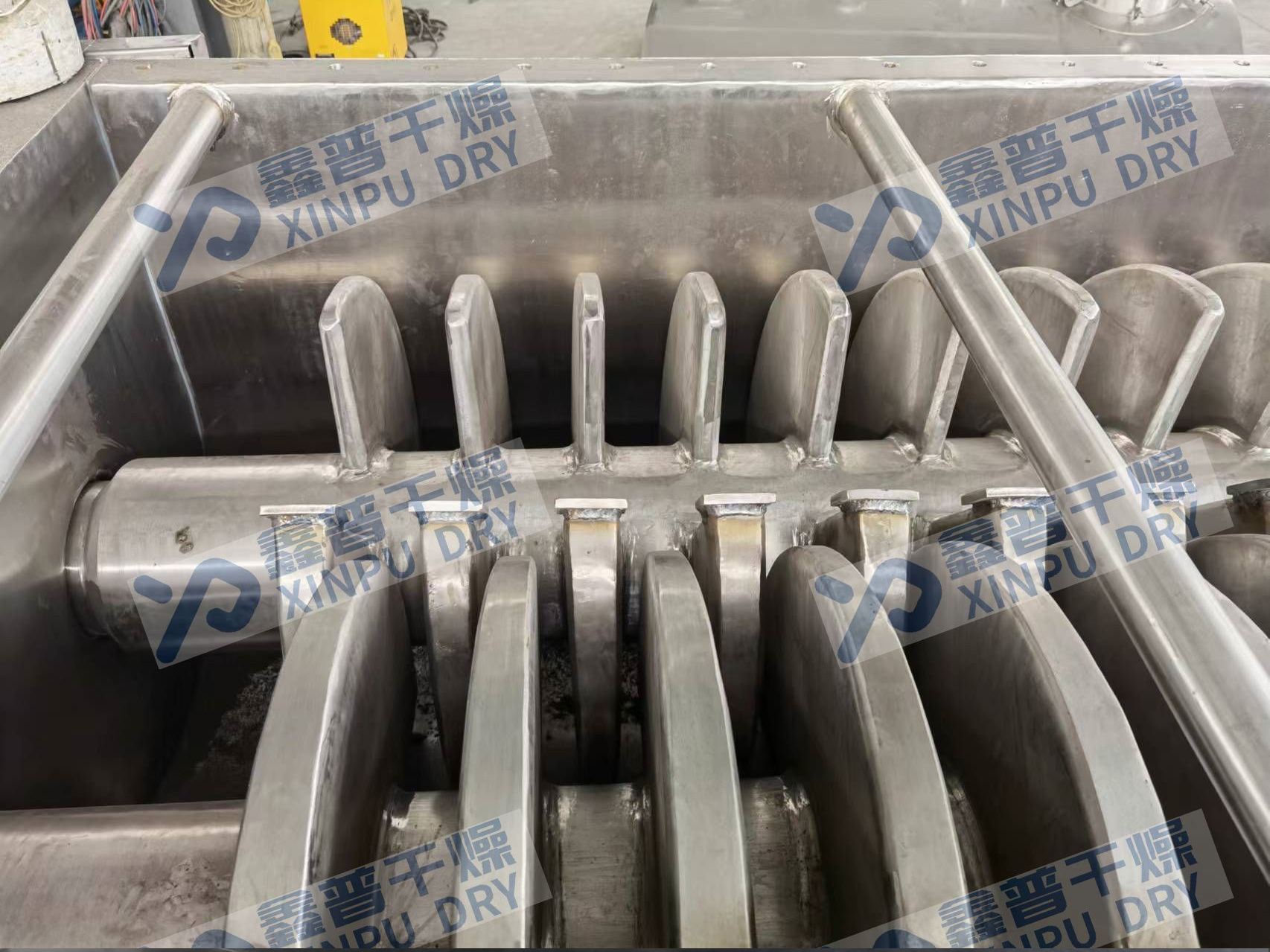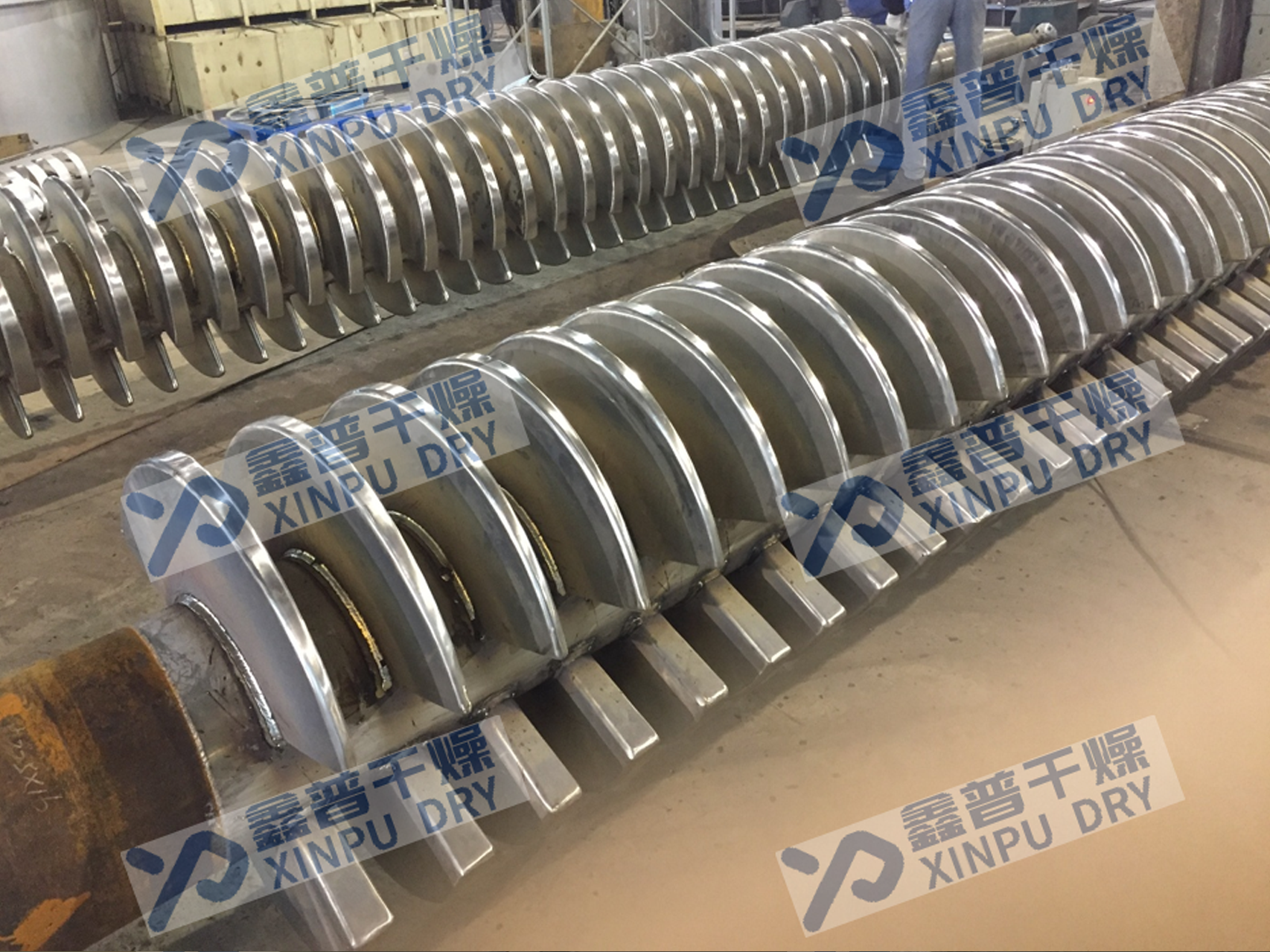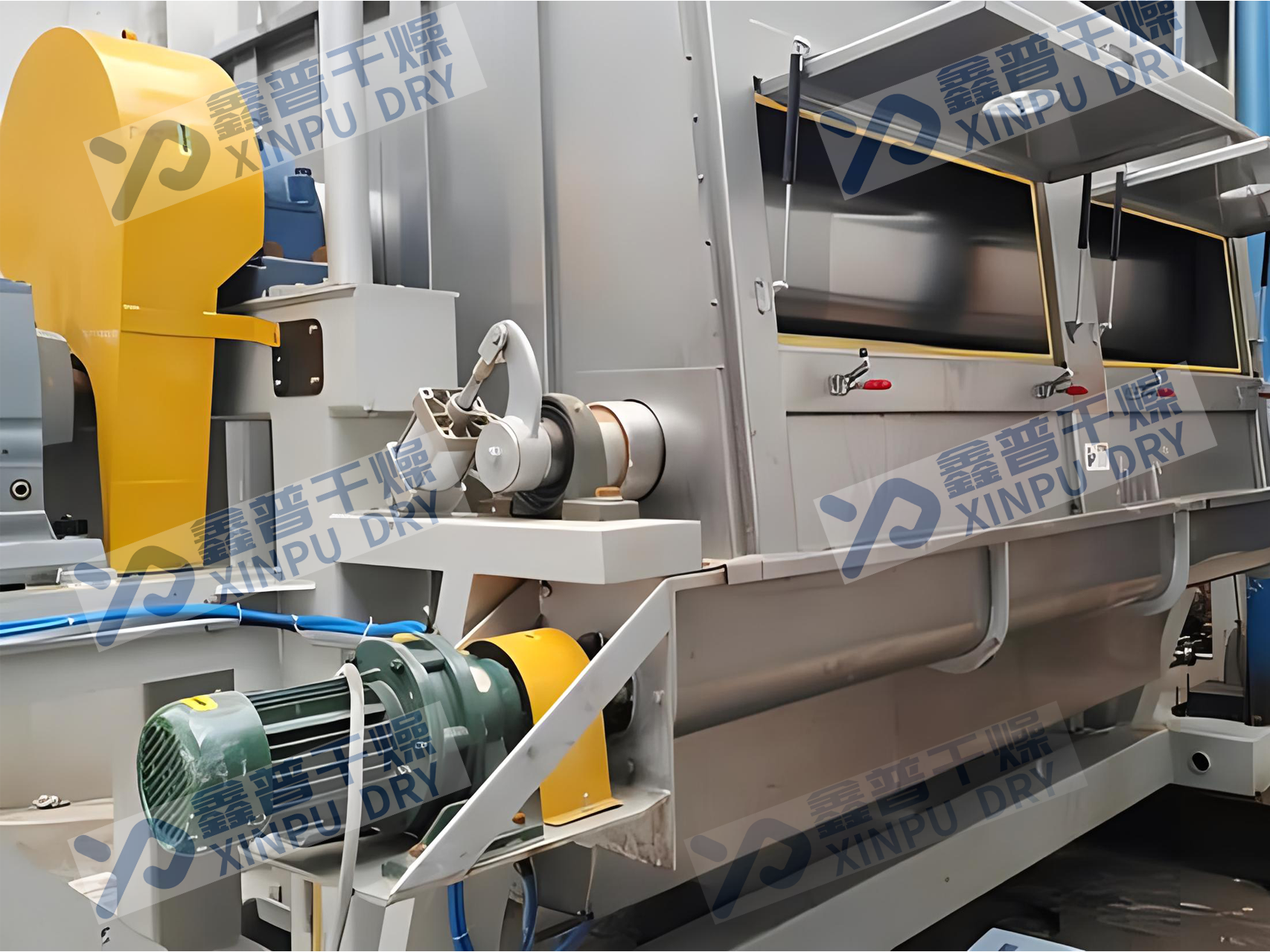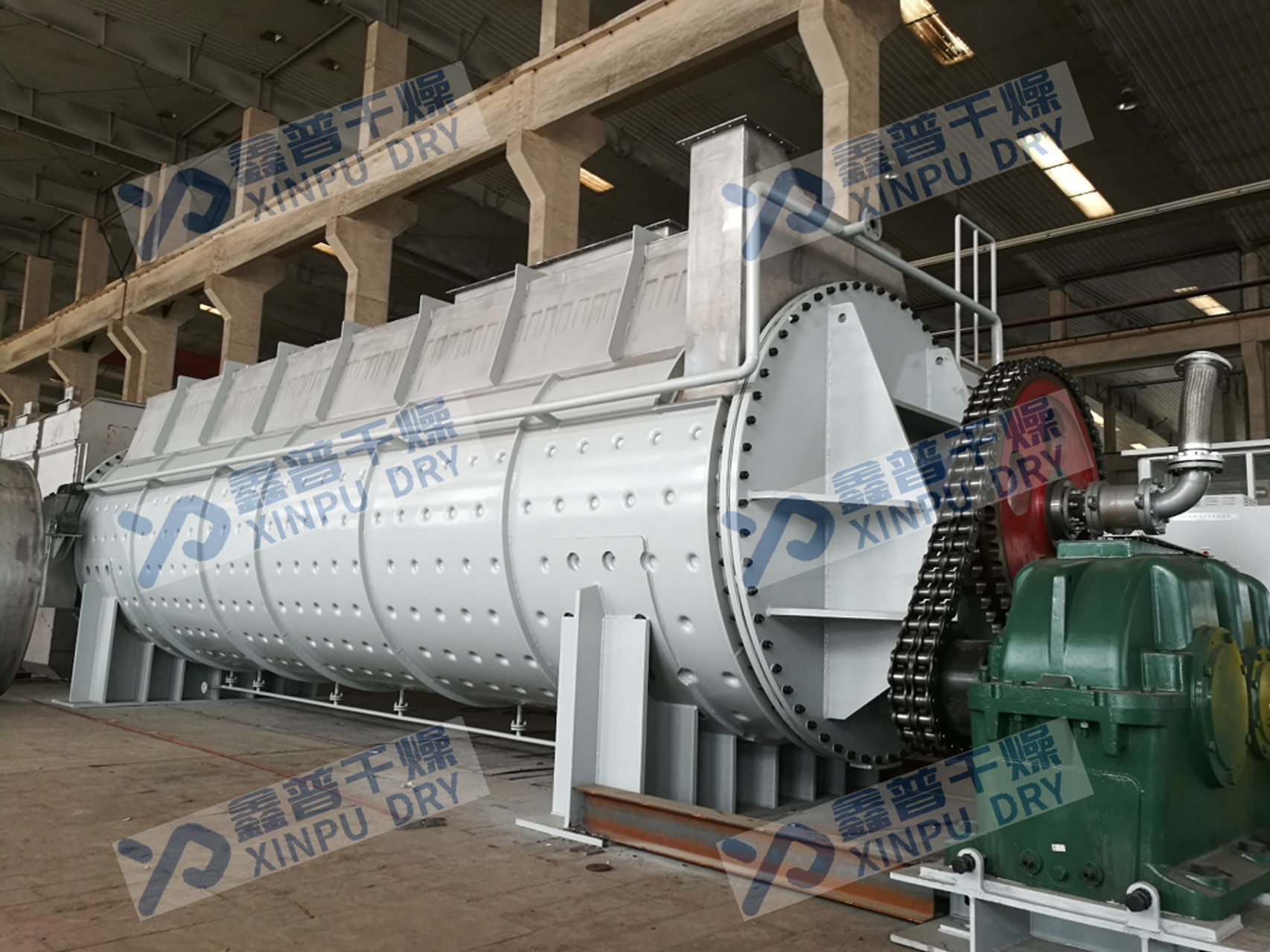Principle of operation
Blade dryer can indirectly heat or cool paste, granule, powder and slurry materials, and can complete unit operations such as drying, cooling, heating, sterilization, reaction and low-temperature combustion. The special wedge-shaped stirring heat transfer paddle in the equipment has high heat transfer efficiency and self-cleaning function of heat transfer surface.
Wedge-shaped hollow blades are densely arranged on the hollow shaft, and the heat medium passes through the blades through the hollow axial flow. The heat transfer area per unit effective volume is very large, and the temperature of the heat medium ranges from -40℃ to 320℃, which can be steam or liquid, such as hot water and heat transfer oil. Indirect conduction heating, without carrying air to take away heat, heat is used to heat materials. The heat loss is only the heat dissipation to the environment through the insulation layer of the device body. The heat transfer surface of wedge blade has self-cleaning function. The relative motion between the material particles and the wedge-shaped surface produces a scrubbing effect, which can wash off the attached materials on the wedge-shaped surface and keep a clean heat transfer surface during operation. The shell of the paddle dryer is ω-shaped, and two to four hollow stirring shafts are generally arranged in the shell. The shell has a sealed end cover and an upper cover to prevent the material dust from leaking out and give full play to its role.
The heat transfer medium flows through the shell jacket and the hollow stirring shaft through the rotary joint, and the hollow stirring shaft has different internal structures according to the type of heat medium to ensure better heat transfer effect.
Process flow diagram
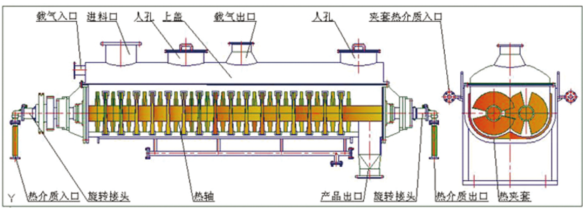
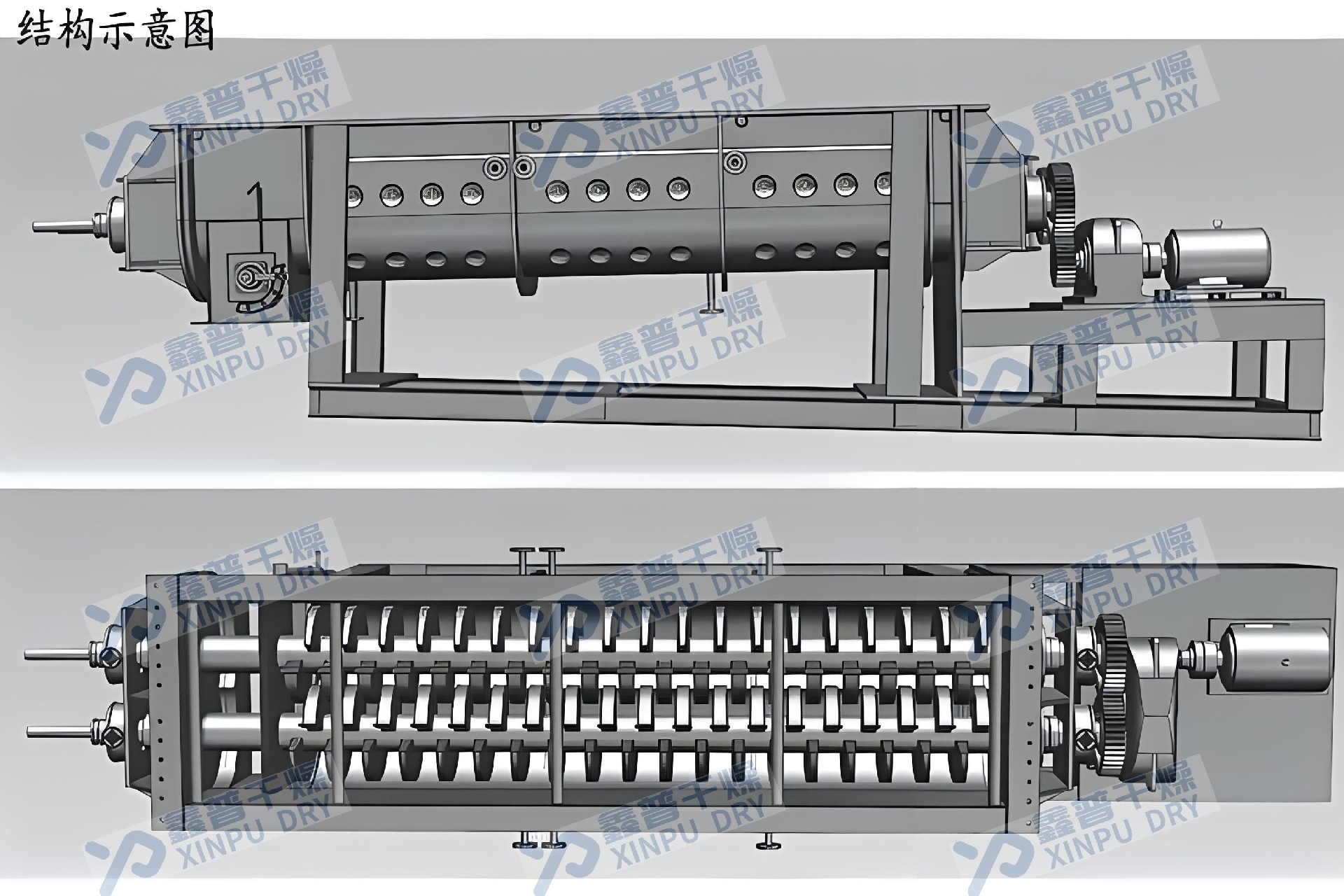
Performance characteristics
◎ The energy consumption of the paddle dryer is low: due to indirect heating, there is no large amount of air to take away heat, and the outer wall of the dryer is provided with an insulation layer. For the slurry material, only 1.2kg of water vapor is needed to evaporate 1kg of water.
◎ The cost of the paddle dryer system is low: with a huge heat transfer surface in the unit effective volume, the treatment time is shortened and the equipment size is reduced. It greatly reduces the building area and building space.
◎ Wide range of materials to be treated: different thermal media can be used to treat both heat-sensitive materials and materials requiring high temperature treatment. Commonly used media are: steam, heat transfer oil, hot water, cooling water, etc. It can be operated continuously or intermittently and can be used in many fields.
◎ Small environmental pollution: no air is used, and dust materials are rarely entrained. The evaporation capacity of the material solvent is very small, which is convenient to handle. Closed-loop circulation can be used for contaminated materials or working conditions that require solvent recovery.
◎ Low operating cost: the structure of. Small wear and tear, low maintenance cost.
◎ Stable operation: Due to the special compression-expansion stirring effect of wedge-shaped paddle blades, the material particles fully contact with the heat transfer surface, and the gradient of temperature, humidity and mixing degree of the material is very small in the axial range, thus ensuring the stability of the process.
Applied range
The paddle dryer has been successfully used in food, chemical industry, petrochemical industry, dyes, industrial sludge and other fields. The characteristics of heat transfer, cooling and stirring make it possible to complete the following unit operations: combustion (low temperature), cooling, drying (solvent recovery), heating (melting), reaction and sterilization. The mixing paddle is also a heat transfer surface, which increases the heat transfer area in unit effective volume and shortens the treatment time. The heat transfer surface of wedge blade has self-cleaning function. Compression-expansion mixing function makes the materials mix evenly. The material moves in a "plug flow" along the axial direction. In the axial range, the gradient of temperature, humidity and mixing degree of the material is very small. The blade dryer with heat transfer oil as heat medium can complete low temperature combustion. For example, calcium sulfate dihydrate (Ca2SO4·2H2O) is converted into calcium sulfate hemihydrate (Ca2SO4 1/22H2O) by combustion. Sodium bicarbonate (NaHCO3) is converted into soda ash (Na2HCO3) by calcination. Cooling medium, such as water and cooling brine, can be used for cooling. For example, the paddle-type alkali cooler used in soda industry replaces the old air-cooled alkali cooler, which saves energy and tail gas treatment equipment and reduces operating costs. Drying, the main function of the equipment, does not use hot air, so that solvent recovery, energy consumption and environmental control are in an ideal state of easy treatment. It is especially suitable for flammable and easily oxidized heat-sensitive materials that need to recover solvents. It has been widely used in fine chemical industry, petrochemical industry and dye industry. In the axial range, the uniformity of temperature, humidity and mixing degree makes the equipment can be used for heating or melting, or for some solid material reactions. It has been successfully used in compound fertilizer and modified starch industries. The paddle dryer can be used to sterilize food and flour. The large heating area per unit effective volume can quickly heat the material to the sterilization temperature, thus avoiding changing the quality of the material due to long-term heating.


